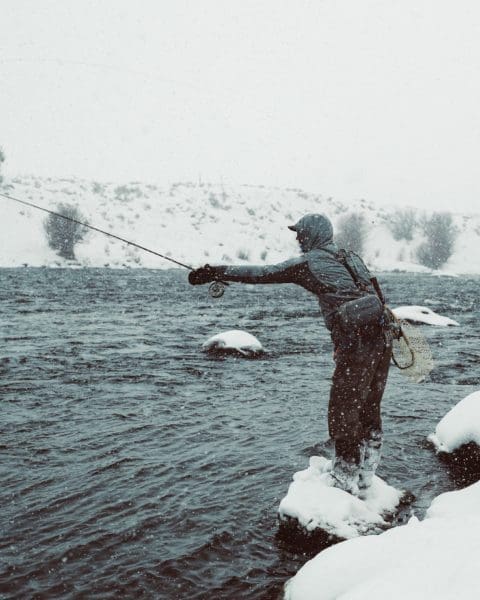Everything You Need to Know About Ice Fishing

Ice fishing is the practice of catching fish with lines and fish hooks or spears through an opening in the ice of a frozen body of water. It is as much about camaraderie and getting in a little recreation during the frigid winter months as it is about the sport of fishing. There are basic equipment requirements, ice thickness guidelines, and how to identify fish. In addition, you need to know how to get to your fishing spot safely.
Getting Started
Ice fishing is an outdoor activity enjoyed by professionals like Daniel Ahasic, who love wintertime pursuits. Now, getting started with ice fishing may seem like a daunting task, but there are many things you can do to ensure your safety. For one thing, be sure to bring a valid fishing license. Moreover, it would be best to learn about the various laws and regulations applicable to ice fishing in your state and waterway. Another important tip is to buy a rod with plenty of sensitivity. Ice fishing rods are shorter than the ones you would use for open-water fishing and are usually three to four feet long. In addition, you should not be aiming for long casts.
Another useful tip is to use an ice skimmer. This tool removes chunks of ice from the hole. It also comes with instructions on how to use the equipment. The instructions will also include safety tips and bait instructions.
Basic Gear
Before you head out to the ice to go ice fishing, you must first know the basic gear for the sport. This type of fishing requires different kinds of equipment, including electronics, rods, and reels. These items will make your ice fishing experience more comfortable and safe.
You should also invest in a good pair of boots. These should be waterproof and have a good grip. Cold, wet feet quickly drain your body heat. Furthermore, boots that slip can cause serious injuries. You should also wear socks to keep your feet dry. You can opt for mid-height boots in cases of no or little snow. However, you must purchase waterproof boots if there is too much snow. You should also invest in a retractable ice pick worn around the neck or shoulders to help you climb out of thin ice.
Another basic ice fishing tool is the ice scoop. It is useful when drilling holes, and it can also keep your bait fresh. It also helps you carry your catch home.
Ice Thickness Guidelines
If you’re planning to go ice fishing this winter, here are some guidelines to follow to ensure your safety. First, you’ll want to check the thickness of the ice. A good rule of thumb is four inches or more. Anything less is too thin and could pose a risk to your safety.
Lastly, look for a clear, blue ice surface. Anything less than that means the ice is melting. It is also weak, so you’ll have to walk on it carefully. If it’s white or milky, it’s a poor choice for ice fishing since it’s easily damaged.
Whether you’re ice fishing alone or with friends, it’s important to understand the ice thickness guidelines for your area. For a single person, you should have ice at least four inches thick to stand on, and for a larger group, you’ll want to have thicker ice. Also, remember that ice thickness is not uniform throughout a lake, so it’s essential to drill a few test holes before setting out to fish.
Identifying Fish
Identifying fish is one of the most important aspects of ice fishing. Different species have unique behaviors and bite triggers. If you can accurately identify the species, you’re fishing for, you’ll have a better chance of catching a big fish. Unfortunately, it might take you a few trips to determine which fish species have been showing up in your sonar.
The first step to identifying fish is learning to use a fish identification tool. An ice fishing flasher can help you learn how to identify the different types of fish and their locations. These devices display the depth of the lake, fish, and lure. Using the transducer, you can also identify fish and other objects by color. For example, a red bar indicates a fish greater than 20 ft. You can also use the transducer’s gain dial to adjust the sensitivity of your lure.
Safety Precautions
Several safety precautions should be observed when ice fishing. First, it is important to check the ice sheet’s thickness before venturing onto it. It is also a good idea to avoid areas where there are open holes in the ice and the ocean. This is because tides and currents may cause the ice to break. Second, never go fishing alone. Always talk with someone experienced in ice fishing before you head out into the cold.
Third, it is important to remember that ice fishing is a dangerous activity. Several factors can lead to an accident. Even though the activity is one of the most popular winter pastimes, it is also dangerous. Studies have shown that as much as 22 percent of deaths in ice-immersion accidents are attributed to ice fishing.









